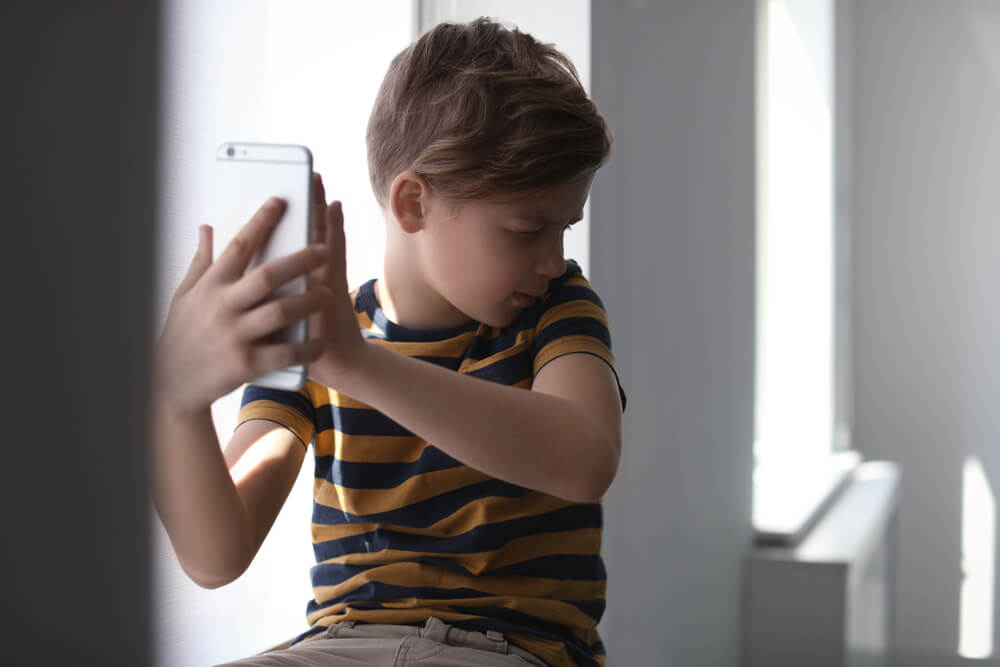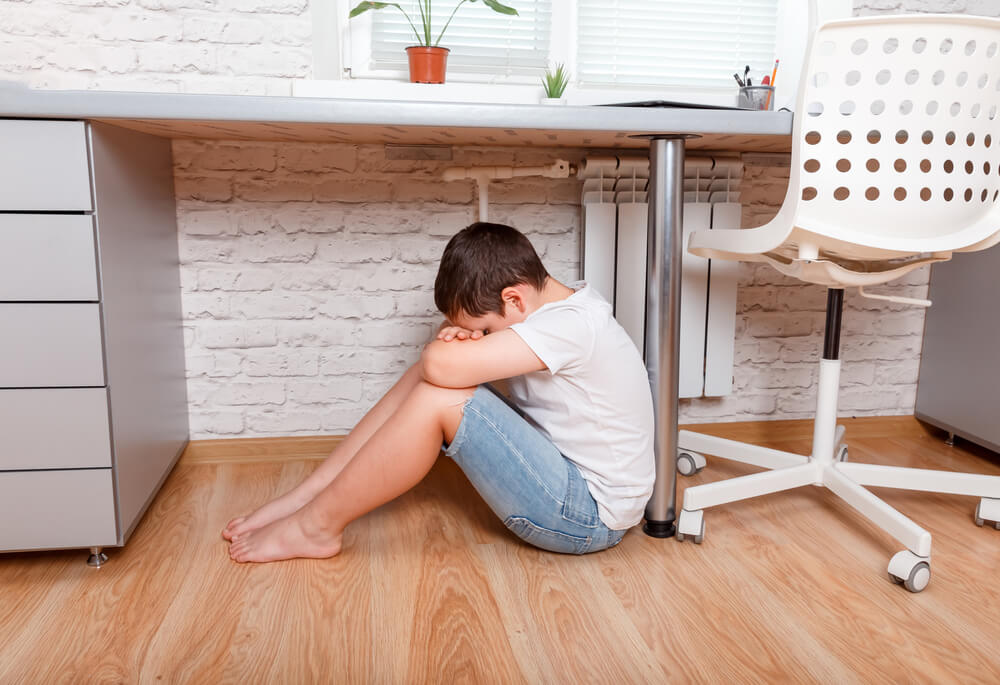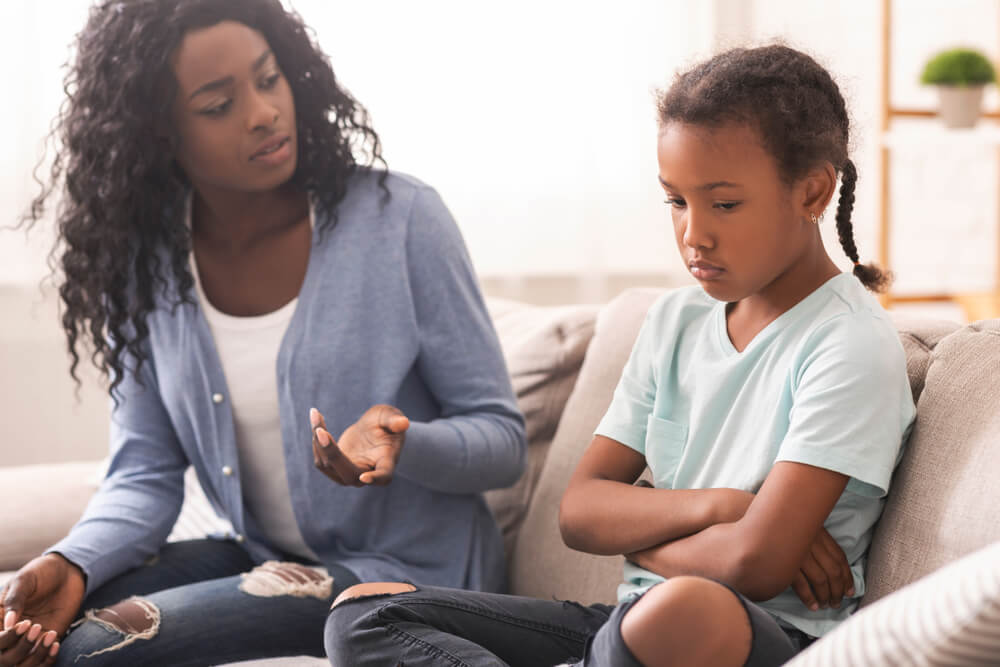Virtual Friendship: How to Keep the Child Away from Dangerous Encounters on the Internet?

People of the twenty-first century are becoming less and less acquainted on the street and are increasingly favoring communication via the Internet. Social media, online games, dating apps, and various instant messengers have significantly facilitated the communication process. Children are no exception to this, as anyone who has accessed the Internet can now have a virtual friend.
Unfortunately, among ordinary Internet users, there are also those who initiate interactions with bad intentions. Let’s figure out together how to protect your children from trouble, which safety rules a child should know, and whether Internet friendship is possible.
Contents:
- Is Virtual Friendship Possible?
- How to Protect Your Child?
- How to Understand that a Child Has Run Into a Bad Online Crowd?
Is Virtual Friendship Possible?

fizkes/Shutterstock.com
Nowadays, distance no longer plays a big role in communication and friendship. Australia, Africa, Europe—every part of the world is now only one click away. Online games, forums, groups and channels bring like-minded people together. Some of them remain virtual friends, whereas many others decide to get to know each other in person and shift the relationship into the real world. This is sometimes how friends for life are made.
Benefits of Meeting People on the Internet
The Internet is not only a tool for finding information but also a place for interaction. It is now much easier to find a like-minded person, and children can communicate with their peers from other countries, whilst learning languages and other cultures. Generally speaking, for some children, it is easier to communicate virtually, instead of in real life, thus online friendship becomes a necessity for them. Of course, it is better to help the child build relationships with other children in real life, however, virtual ones can also be a good reason to go outside.
Teenagers exchange their creative output and receive support from their Internet friends. Some of them benefit from the “fellow traveler effect”, as it is often easier for a person to open up to someone if they don’t have any common acquaintances and there is a high probability of never seeing or talking to each other again.
Under the condition of sticking to safety rules, a child can get a great experience of communicating with different people without leaving their home.
According to U.S. dating statistics, nowadays, roughly 20% of relationships have formed online. Social networks allow us to learn some information about a person at the initial stage, such as their musical preferences, interests, communication style, appearance, etc. All of this allows us to view a large number of people in a short time and choose only those whose tastes match ours. This is convenient and quite comfortable.
By the way, I married a person whom I met in an online chat, and I also have been talking to some Internet friends for more than a decade, although I have never met them in the real world, as we live in different cities. However, before I met my future husband in real life, I sent all the information that I had about him to my best friend and scheduled our meeting in a public place.
The Dangers of Talking on the Web

SpeedKingz/Shuttertock
It is true to say that every phenomenon has got its downside. Meeting people online can be dangerous. Communication with any stranger through the screen may at first seem innocent: “What can they do to me? I’m far away!”. However, unfortunately, the Internet has got many ways of deception and negative influence. Therefore, it is important to be familiar with the rules of safe behavior on the Web.
Meetings on the street can also be dangerous, but since the stranger has less time to study the victim, there is a better chance of running away or ending the meeting immediately, without going into a conversation.
Even adults can fall for the bait of unscrupulous users, let alone children. Who are they interested in? Who is sending them friend requests? Of course, most of them are peers, however, not just them. A bad person may be hiding under the mask of a child on the Internet. They can easily get all the necessary information and use it against the child. Here are the main dangers:
- Fraud. Someone or something catches the child’s attention, after which, under various pretexts, they are offered to click on a link. The link brings them to an unsafe site, the scammers obtain the child’s personal data and access to finances or their gadget gets exposed to a virus attack.
- Acquaintance with the purpose of in-person meetings. According to the statistics, in 82% of online sex crimes, the victim’s social media account has been used by the offender to study them, as well as 65% of those, were able to gather general school and home information about the child, and 26%—the exact whereabouts of the child. Child sexual molesters easily gain the confidence of the victims, after which they can ask for intimate photos or prey on their feelings and insecurities, all to lure the child into an in-person meeting.
- Drug dealing. Under a seemingly nice pretext of communicating on the Internet, the child is offered an in-person meeting or easy money, after which they are drawn into either trading or using illegal substances.
- Sects and banned organizations. Now, in order to cloud a person’s mind, one no longer needs to stand at the entrance to a subway and distribute leaflets or knock on doors with pamphlets. It is enough to send friend requests to fifty people, and someone will definitely respond. Subtle psychological techniques are used when getting people into such organizations, in order to convince the victim of good intentions.
- Cyberbullying. Communication with a peer may be just a way to get as much information out of a child as possible, in order for them to use it against the other person. Cyberbullying is much more dangerous than ordinary bullying since it can appear invisible to teachers and parents.
- Access to personal information. If a child is not familiar with the rules of safe behavior on the Web, the attacker may not even need to enter into a dialogue with them. Children often post their school number, favorite places for walking, and sometimes their home address, too, on their social media pages. According to the statistics, 8% of the children have publicly shared their addresses in the past. The child can also be boasting about some expensive gifts or the financial well-being of their family on the Internet. Therefore, finding them in a city and watching them wouldn’t be a problem for experienced offenders or scammers.
Read more on Cyberbullying: is there a way out of it? What should the victims of cyberbullying do?
How to Protect Your Child?

Dmytro Zinkevych/Shutterstock.com
After all of the scary situations described above, a logical question arises: what to do? First, do not panic. Next, follow our instructions for parents.
Technical Safety
Today’s children access the Web at a very young age (3-6 years old), which often happens without the supervision of adults. So, the older the child gets, the less the parents control them. On the one hand, the desire of parents to give freedom to their children is commendable, however, on the other hand, the lack of attention to online safety increases the risk of the child meeting bad people on the Internet.
If you want to give more freedom to your child, you must be guided not only by their age but also by their readiness to come into contact with everything that the word “Web” entails.
It is important to be close and to look at what the child is doing on the Internet. This includes knowing what games they play and discussing the financial aspect, such as Internet donations and purchases of gaming items for real money. If the child has decided to create a social network account, allow it, but do it together with them. It would be better than them creating a page without telling you.
- Install a browser with the ability to block any “adult” content.
- Get a Kids360 app to help you. It allows you not only to track the interests of the child but also to set a screen time limit and monitor access to other apps and games. It is good not only for the safety of the child but also for studying and communicating with friends in real life!
- Use children’s social media accounts (and email services for kids). It should be similar to using a parent’s bank account or a child’s bank card. Yes, the funds on the card belong to the child, but the spending reports go to the parent. In a healthy relationship, the parent will not scold the child for the purchase of a cookie, however, if they notice that the money has begun to flow in an unknown direction, they can take action. This also applies to social media. The child’s page gets linked to the parent’s email and/or phone data so that the adult has the opportunity to track any unwanted activity. In this situation, it would be very important to respect the personal boundaries of the child so that your safety precautions do not destroy the trust.
It is important to talk to the child (especially a teenager) and to let them know that these measures are not to control or violate their personal boundaries, but rather to help and insure that you will be there for the child whenever they need it.
Psychological Safety

New Africa/Shutterstock.com
Children believe in the best, and this is wonderful. However, attackers can also take advantage of the child’s innocence and naivety. It is important to teach children to see through the manipulations and to be able to say “no”.
Internet communication is similar to communication in real life. It also requires the ability to set boundaries and keep a distance. It is perfect if the child is friends with someone on the Web who they also know in real life.
Explain the main safety rules to the child:
- It is forbidden to provide personal information on the Web, such as the full name, place of residence, place of study, financial situation of the family, etc.
- Before meeting up in reality, it is better to have a video call first. Kids often want to get to know their virtual friends by setting up in-person meetings with them. Try to arrange a video call for the two children in order for them to see each other as early as possible.
- It is important to choose the right place for the first meeting. It should be a place with a lot of people and in daylight hours. It is better if the parents accompany the child or meet them after. Forbid your child to change plans without your consent because leaving with a stranger can cost the child their life.
If a new acquaintance is constantly putting off a video call and an in-person meeting, this is a clear signal that something is wrong, and the child’s attention should be pointed to this.

Serlena Bessonova/Shutterstock.com
Tell your child about fake friends and bad people on the Web. Here is a list of disturbing behaviors of the person that a child could be talking with:
- Personal questions, such as “Where do you live? Where and how do you study? What clubs and extracurriculars do you go to? Where do your parents work? What is their salary?, etc.
- The desire to “get closer” very quickly, with phrases such as “It seems to me that we have known each other for ages”, “I really understand you”, “You are my closest friend”.
- The person talking to the child pretends to be a popular person (blogger, musician, actor).
- The person is trying to immerse the child in a sense of mystery, by saying “Don’t tell anyone that we are talking”, “I’ll stop responding if someone finds out …”.
- Conversations on adult topics: “Do you masturbate?”, “What kind of boys/girls do you like?”, “Have you already had sex?” etc.
- The person insists on sharing intimate photos or videos.
- The person is asking for money under various pretexts.
If a new virtual friend begins to do at least one of the above, all communication with this person should stop, as this is potentially dangerous!
Don’t worry for your child when they go out to meet up with their friends, whether virtual or real. See their location and route on a map, and listen to what’s going on around them with the Findmykids app.
The Basic Rules of Behavior on the Internet

byswat/Shutterstock.com
Similarly to real life, virtual reality has rules for safe behavior. They need to be followed both by parents and their children:
- Children shouldn’t be going on websites that are not intended for kids (setting up parental control would make life easier). Apps, games and social media must be installed and verified by parents.
- Any personal information that can be used with malicious intent shouldn’t be left on a shared page. For example, a child can talk about their hobbies, but not about where they live. If the child decides to start a blog, support them, and become their advisor and mentor.
- Watch videos before they are posted online, in order to avoid unnecessary information appearing on the Internet.
- All pages can be split into public and private, and they should be kept separate. Private pages can contain more personal information, however, on them, the communication takes place only with those whom the child knows in real life. Public ones allow one to communicate with everyone else, however, there shouldn’t be any personal data on them, in this case.
- What goes on the Internet stays on the Internet. Thus, we should not be publishing personal photos, scans of documents, bank cards, tickets for planes and events, property documents, and so on, as it is not safe.
- Children shouldn’t be clicking on unfamiliar links, even if they are told that they’ve won a million dollars, or the link was given by a “trusted friend”. It is better to speak to parents first or to ignore the message altogether. The link may hide an explicit website, a virus, phishing attempts, etc.
- Remember that it is unlikely that an adult will decide to simply enter into a friendship with an unfamiliar teenager. Most likely, they want to get something from the child.
- Explain to the child that in any incomprehensible, uncomfortable, and difficult situation, it is better to seek help from their parents. Tell them that you will not scold, punish or lecture them, and that you will try to help instead.
Read more on Child safety on the Internet: A guide for parents.
How to Understand that a Child Has Run Into a Bad Online Crowd?

Olimpik/Shutterstock.com
No matter how wonderful the parent-child relationship is, not all children are ready to come to their parents and tell them about their problems. According to an American social study, 20% of children receive inappropriate messages, and only 25% of them tell their parents about it. Therefore, you need to pay attention to sudden changes in the child’s behavior and their emotional background, as well as to a number of other behavioral indicators:
- The child becomes withdrawn, unsociable and irritable.
- The child isolates themselves from their friends or relatives.
- They resist going to school, and have lost interest in studies, sports, or their hobbies.
- They’ve lost appetite or they are suffering from sleep problems, such as nightmares or insomnia.
- The child hides their messages or deliberately leaves them in plain sight as if provoking you to read their conversations.
- The child cannot clearly explain who they are talking with and about what.
- The child’s money is being constantly spent on something.
- The child is depressed, has got suicidal thoughts and talks about self-harm.
- The child becomes very anxious when they receive a message on the Internet. They start crying or become aggressive.
Any of the points mentioned above are a strong enough reason to take a closer look at your child. However, if you realize that you see more than three of these signs, it would be time to take action.
How to Help in This Situation: Algorithm of Actions

fizkes/Shutterstock.com
The most crucial help for children in trouble is the support and understanding from their parents. Hence, if you found out or you are suspecting that your child is in trouble online, you need to do the following:
- Try to clarify the situation. If you have access to a child’s page, review the content carefully. Do this only as a last resort if it is not possible to find anything directly from the child. If you have a trusting relationship, try to calmly talk to them, whilst being as understanding as possible. Listen to your child, do not scold them and help them out.
- If you notice that what is happening is illegal, for example, if the child is receiving photos or offers of a sexual nature, or there are mentions of fraud, drugs and blackmail, you have every right to contact law enforcement agencies and demand the protection of your child. It is advisable to take screenshots of the conversation right away, in order for the villains not to have time to erase the data.
- If cyberbullying is taking place, try to get the child out of this situation. Perhaps, new accounts and more anonymity and privacy will be required. If cyberbullying is an extension of bullying at school, the school administration and teachers would need to get involved in order to resolve the conflict.
- Review the rules of safe online behavior together with your child. It would be good for the child to autonomously find the reasons on why this or that action is not safe.
The Internet is no longer the safest place. Society supports anonymity on the Web, which unfortunately enables a loss of a sense of security at the same time. Children, due to their naivety and lack of knowledge, can easily fall into the traps of adults. Therefore, it is important to be there, to teach and to support them.
We often say to our children that they mustn’t talk to strangers on the street, however, we keep forgetting that the same applies to the Internet. Help your kids to find themselves in real life so they don’t have to strive to search for themselves in the virtual world!
The picture on the front page: Ground Picture/Shutterstock.com
Проверьте электронный ящик




















